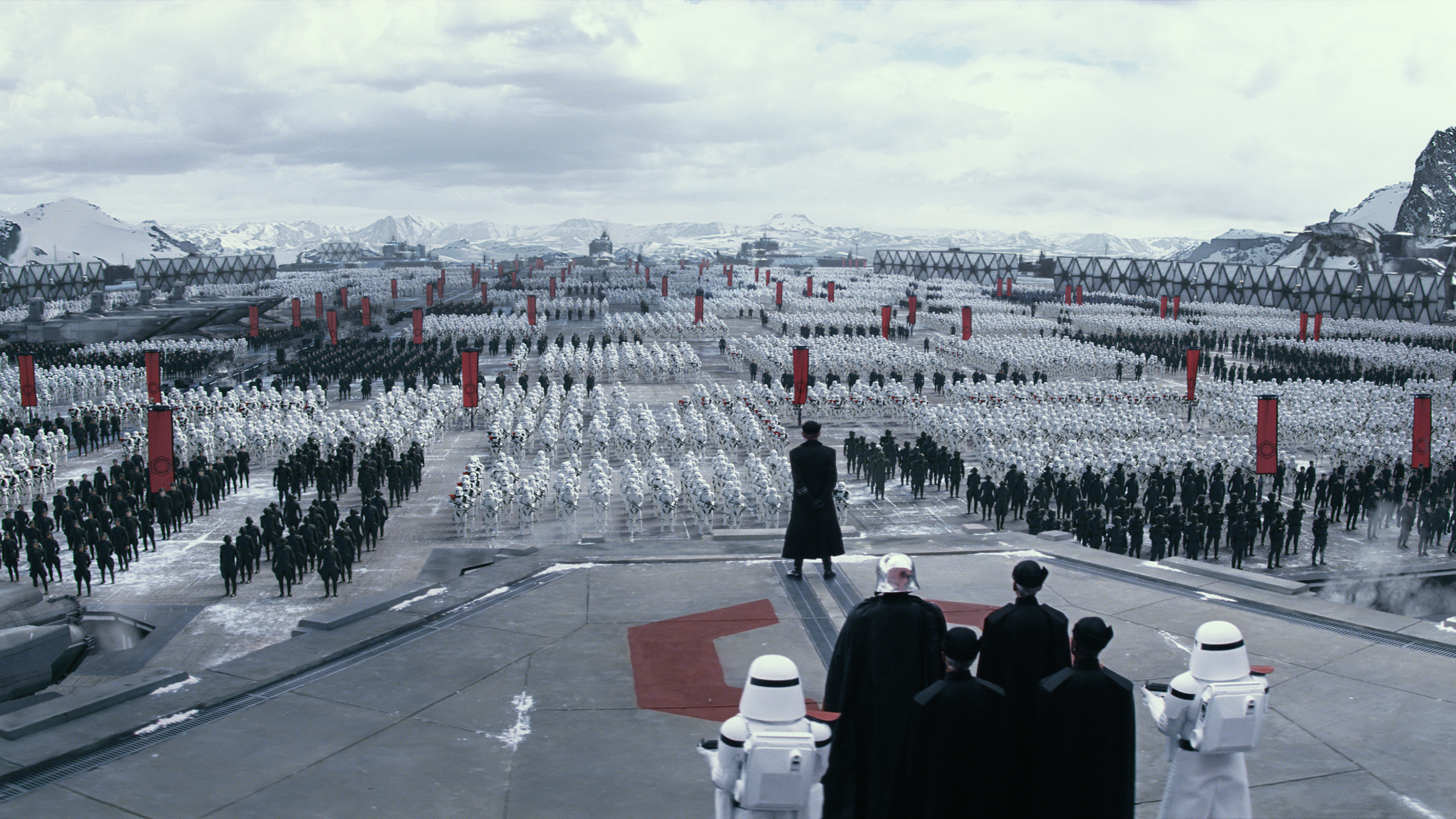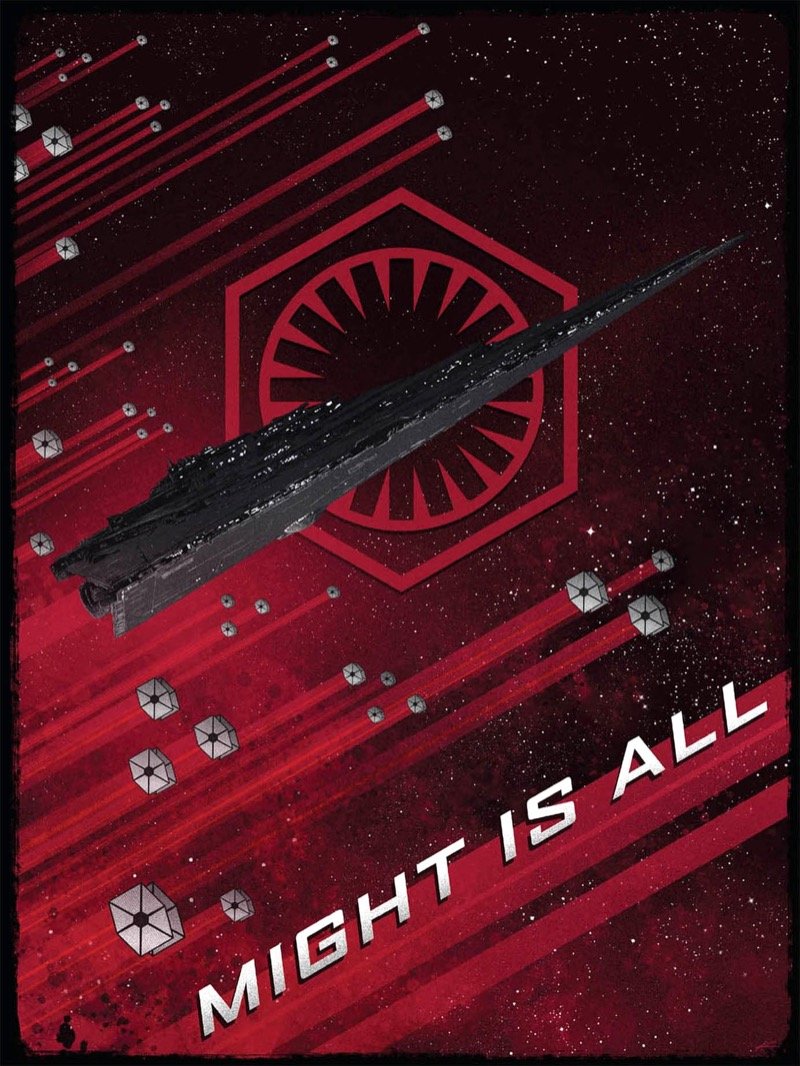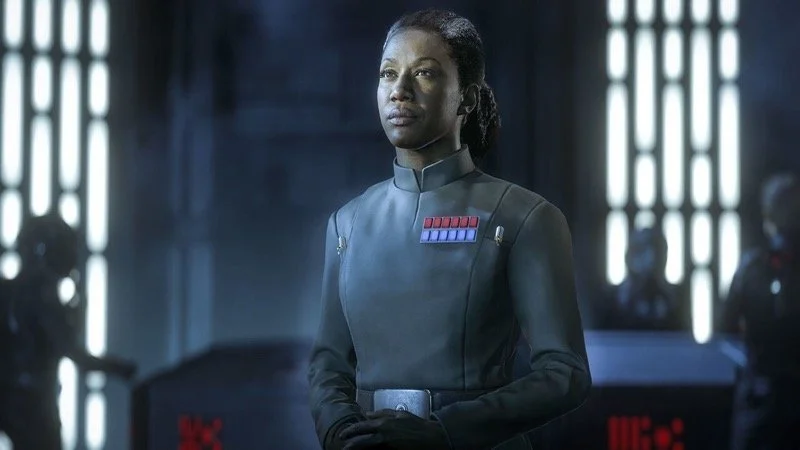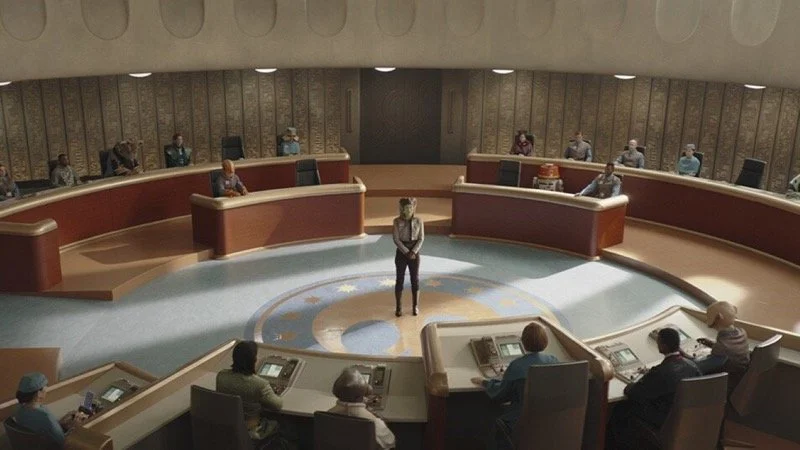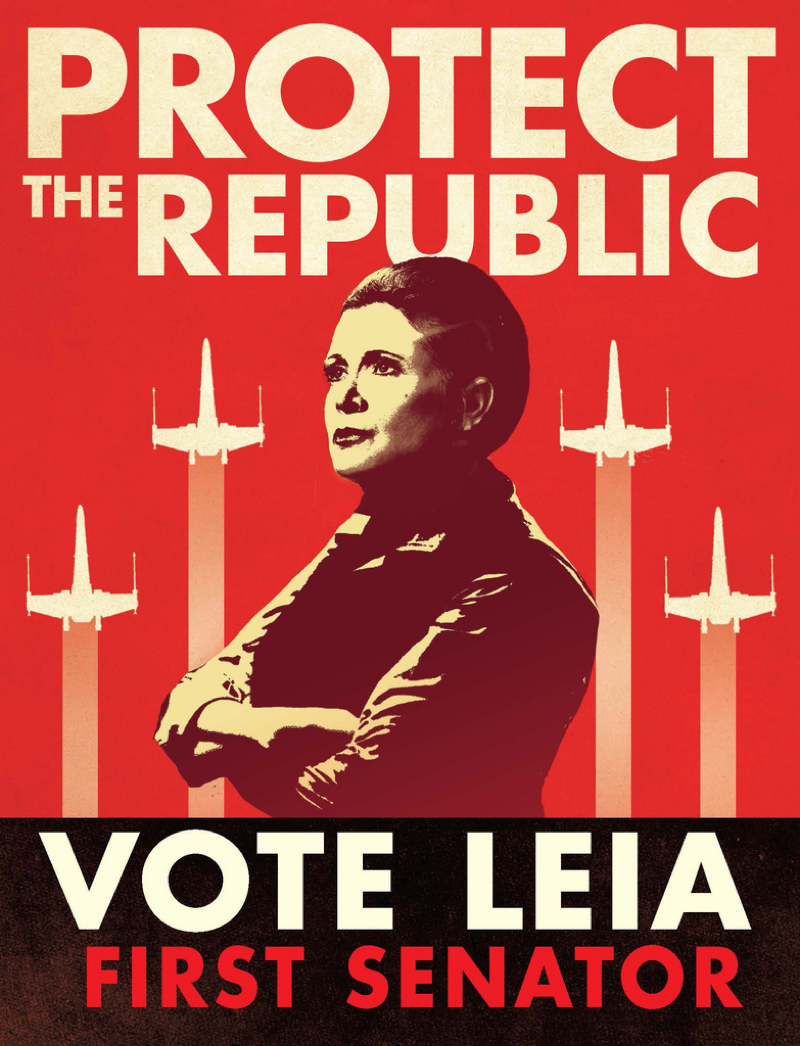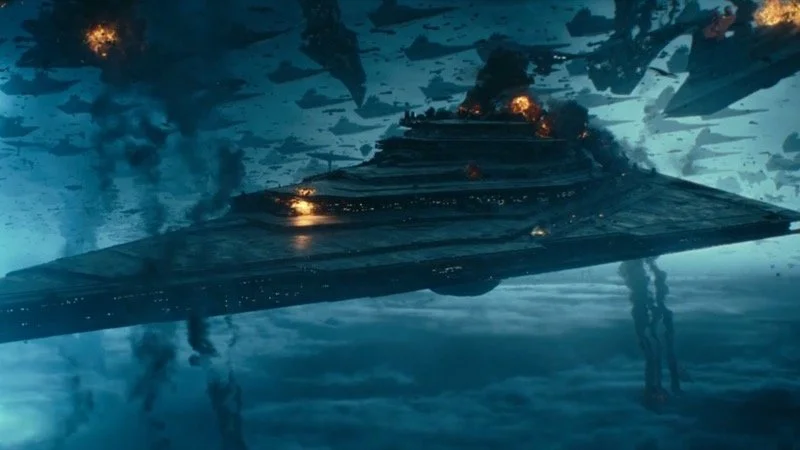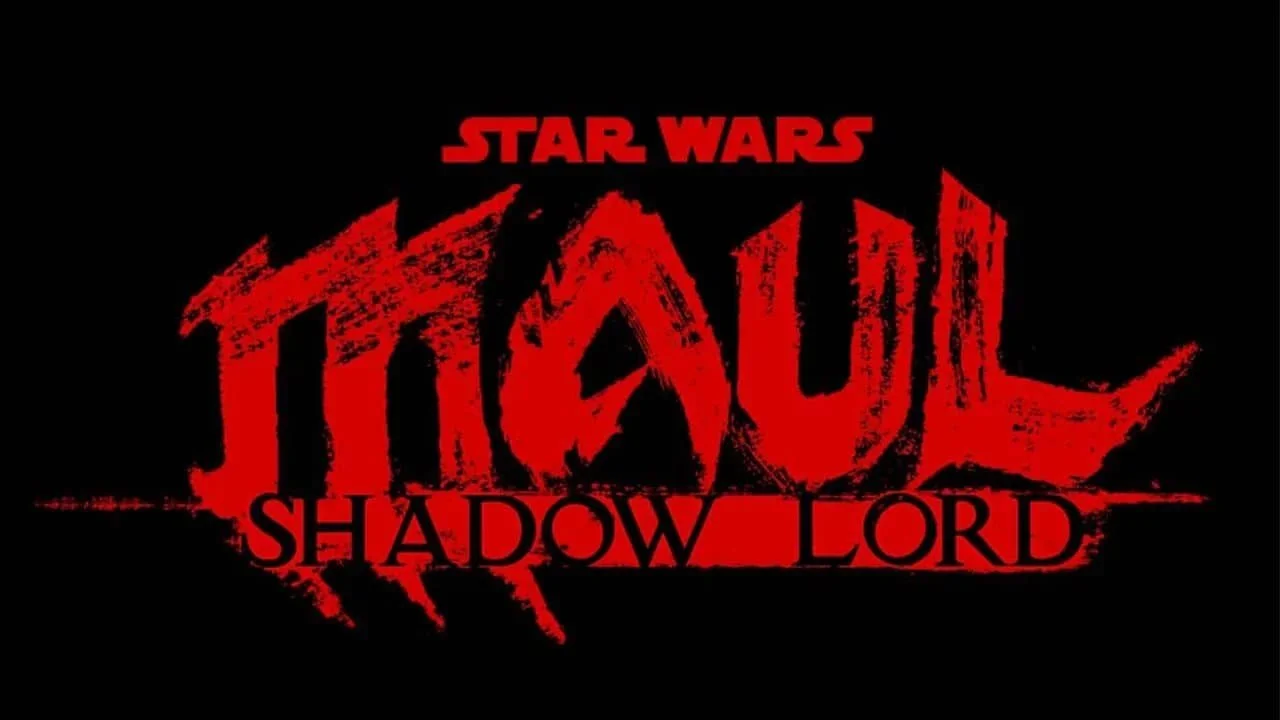How And Why The First Order Was Such A Threat
Image Source: Wookieepedia
The First Order, as it appears in the Sequel Trilogy, is vast and terrifying, with dozens of sleek Star Destroyers and a massive flagship, The Supremacy, appearing on film screens. In the brief period the Final Order allies itself with the First Order, the organization is even more devastating, with Galactic Empire-era designed Star Destroyers rendered on a massive scale and each carrying a Death Star-level laser on their undercarriage. But how did all of this form out of sight of the New Republic, and why did the Galactic Empire evolve into the First Order even after its collapse following the Battle of Endor?
Origins And Ideology
The Imperial system under the Empire placed Palpatine at the head of the government and had all power radiate out from him. When he died, the Empire was plunged into chaos due to that intense centralization. What remnants of the Empire that fled to become the First Order evolved into an ideology that initially rejected the idea of a supreme, mystical-tinged leader. This likely went against Sidious’ plans for this faction, as he had selected the retreat of chosen military officers, with Operation Cinder meant to empower and enforce the most zealous of Imperials and break all others who did not meet the blind loyalty the Sith Lord demanded.
RELATED;
mage Source: Wookieepedia
The reason the First Order became derailed was likely due to Grand Admiral Rae Sloane, who killed Sidious’ hand-picked agent, Gallius Rax, and who we know went on to rule the First Order for some time. Under her tenure, the First Order focused on survival but also seemingly on connection, establishing links with other Imperial forces already in the Unknown Regions and probably other Imperials back in the wider galaxy through the Shadow Council. The First Order came to exalt order above all else, and this was ultimately maintained when Snoke somehow came into power over the organization.
Image Source: StarWars.com
By that time, the Imperial survivors who were the First Order had been hardened by Cinder, Jakku, and the years they spent hiding at the fringes of the galaxy in hostile regions of space. They were fully radicalized to an ideology of strength over everything else and saw military might as the only means to peace while deploring the ideals of the New Republic. But, to secure this new future, with them back on top, the First Order would need a lot of help. Fortunately, Sidious had provided it.
Imperial Secrets
Image Source: Wookieepedia
The birth of the First Order is also wrapped up in secret contingencies of the Emperor, from Cinder to Jakku to other hidden truths kept from many under his command. We know that years, perhaps even over a decade before A New Hope, Palpatine was preparing for expeditions into the Unknown Regions. He first used probes but later sent Imperial crews to establish hidden bases and facilities out in the area, likely planning for the possibility of a defeat, and if not that, then still shoring up the Empire’s strength for the future.
Of course, he died, and those contingencies were activated. Much remains shrouded about the Imperial presence in the Unknown Regions, but we know a great many ISDs made up these forces and that Palpatine’s personal Super Star Destroy The Eclipse (a nod to the Legends superweapon ship) existed there. There were also repair facilities and waystations established. But there was also Exegol and its considerable resources and forces. Many members of the First Order had no idea about the Final Order or the Sith Eternal, as they had been raised or emerged in the wake of Cinder not being loyal to Dark Side mysticism or the Sith.
Image Source: Wookieepedia
Despite this, links between the groups existed. The main case is technology, with the most prominent being the First Order’s inheritance of the long-running Imperial-era project to transform the sacred world of Illum into a star-system-killing superweapon. Given how secretive this project was, it seems likely that Palpatine’s Final Order allowed the First to take over the construction and then finish the work. Other links exist in the proliferation of Death Star-style weapons within the First Order, with massive land-based weapons and huge cannons on the underside of First Order ships. Technology like this is hinted at having links to the weapons used on Xyston-class Star Destroyers employed by the Final Order, suggesting the shadowy group used the other as a testbed to refine designs and technology.
The largest link, though, was in Snoke. A construct of Palpatine, Snoke allowed him to restore a modicum of control over the First Order and steer them in the direction he desired. The weapons newly developed by the First Order would now fully turn to bear against a New Republic not ready for what was to come.
New Republic Failings
Image Source: StarWars.com
The New Republic has gotten a bad rap in recent years as expanded material has made clear the lofty ideals of the Rebellion failed to take root in the government they helped create. Even five to six years after Endor, men like Hamata Xiono, Senator for Hosnian Prime, dismissed the idea of Imperial remnants as anything more than disorganized, scattered forces. However, to Xiono’s credit, the book The Rise and Fall of the Galactic Empire notes that his stance against warfare was out of a critique for the past five years of galaxy-spanning civil war. While he articulates his stance poorly in what media we have seen him in, desiring peace and recovery over continued conflicts is a valid desire many others shared, especially after destruction unleashed by events like Operation Cinder.
However, the New Republic became too complacent. By the time of the Sequel Trilogy, the government body is hopelessly divided between two factions, one which secedes from the New Republic due to a desire for greater centralized power. This group, the Centrists, with many Senators in the faction already collaborators with the First Order, gave the Order significant legitimacy by joining them, dividing the galaxy, and beginning a cold war. Meanwhile, the New Republic, both before and during this period, struggled with corruption and criminal groups. These groups were often secretly aided by the First Order to weaken the New Republic. We see a perfect example of this in Star Wars Resistance and read about another instance in the novel Bloodline.
Image Source: Wookieepedia
In the wake of this chaos, though, the New Republic was slow to arm itself. Part of this was due to ongoing corruption and how many major galactic corporations who might be building Republic ships were from the Imperial era and secretly supported both the First and Final Orders. But another reason is because of the genuine desire for peace. Viewing military build-up as a provocative action, the New Republic was forced to use a paramilitary force, the Resistance, to combat the First Order, but even there, a line was very carefully trodden.
A notable episode of Star Wars Resistance features Poe Dameron and Captain Phasma weighing the politics of who will shoot first and set the narrative of the engagement in a tense encounter aboard a First Order station. In the end, the New Republic’s excessive focus on appeasement and fear of confrontation failed them, with billions of deaths in the Hosnian Cataclysm and many more in the ruthless galactic conquest that followed.
Conclusion
Image Source: Wookieepedia
The Rise of Skywalker ends on a triumphant scene and with good reason. Hundreds, perhaps thousands, of civilian vessels appeared above Exegol, defeating the Final Order and its Sith leader. Elsewhere, we see a montage of First Order ships being destroyed or taken down at notable locations across the Star Wars galaxy. Palpatine is destroyed by Rey for good, the Sith Citadel on Exegol is cracked open, and evil is thrown down…but it is not destroyed. The Rise and Fall of the Galactic Empire makes it clear that for as many First and Final Order members lost their lives, there were survivors.
Radicalized and thoroughly drilled with the ideology of their respective creeds, these people represent the survival of the First Order in some form. While the Final Order was almost certainly annihilated down to very few survivors due to being almost entirely based on Exegol, the First Order was not. It was spread across the Unknown Regions, and there were and likely are Centrist worlds with First Order garrisons and sympathizers to Imperial ideals left out there in the galaxy.
We think it is unlikely that Star Wars will return to the threat of an empire encroaching on the galaxy in the upcoming Rey film. The message the final Skywalker Saga film ends on is a good one, but Lucasfilm MUST have a firm plan in place to explore the consequences of that film. The First Order was an enormous threat, and while it was dealt a heavy blow by the end of TROS, its true defeat should get an explanation the same as the defeat of the Empire saw the events up to and including the Battle of Jakku. Room can exist for surviving remains and diehard loyalists, but they should not have the power or ability the First Order did in their formation. Their survival was the culmination of decades of planning and manipulation, and the Star Wars galaxy should remain a safer place with their defeat.
READ NEXT:
Source(s): Star Wars Resistance, Bloodline, The Rise and Fall of the Galactic Empire, The Rise of Skywalker

